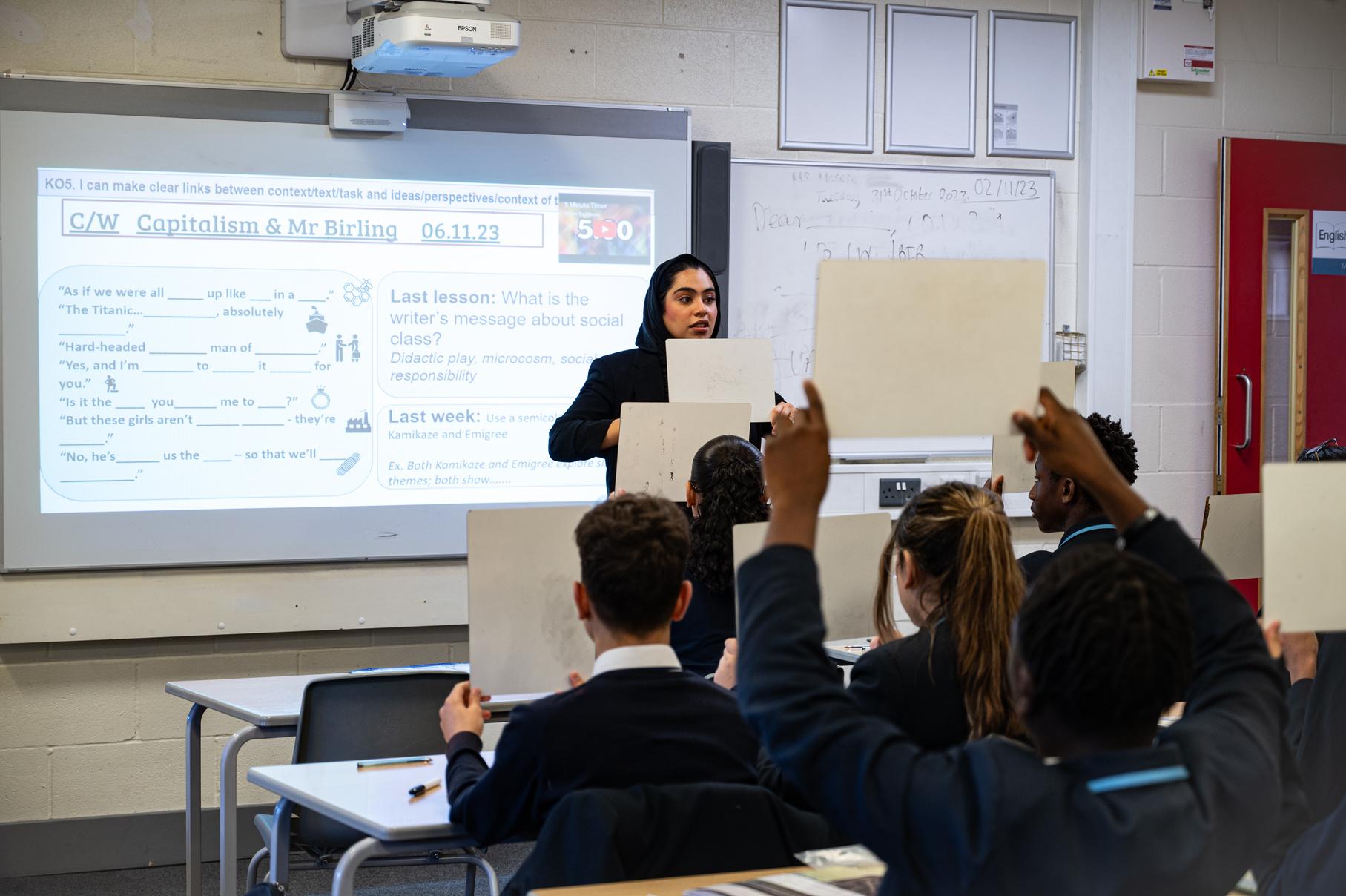
4 minute read
Cultivating Classroom Excellence
The Mini Whiteboard play for Active Learning and Concept Clarity
As a classroom practitioner, I've come to appreciate that teaching isn't just about pouring new information into students' minds; it's about building a strong foundation of knowledge that they can draw upon as they continue to learn and grow. One of the most effective ways to do this is by creating a bridge between their prior knowledge and the new material, enabling them to construct and solidify mental frameworks that support long-term memory retention.
In this article, I'll share my experiences with the use of mini whiteboards as a tool to achieve this objective. I've found that mini whiteboards not only encourage increased thinking and participation among students but also foster a positive culture of error, empowering students to be more confident in their learning journey.
Building bridges with mini whiteboards
Mini whiteboards are powerful tools for teachers seeking to bridge the gap between students' existing knowledge and new information. These portable whiteboards provide an interactive platform for students to actively engage with the content being taught. Here's how they help:
Active engagement: Mini whiteboards encourage students to participate actively in the learning process. When teachers pose questions or present problems, every student has the opportunity to respond on their individual whiteboards. This immediate engagement allows them to process new information and relate it to what they already know.
Immediate feedback: Whiteboards provide instant feedback. When students write down their answers, teachers can quickly assess their understanding and adjust their teaching accordingly. If a majority of students get an answer wrong, the teacher can address the misconception immediately, ensuring that the students are on the right track to build an accurate mental model.
Concept clarification: Mini whiteboards allow students to clarify concepts by visualising their thoughts. They can draw diagrams, make connections, and represent information in ways that make sense to them. This visual element helps solidify the connections between prior knowledge and new material.
Fostering a positive culture of error
Reducing fear of failure: Mini whiteboards offer a low-stakes environment for students. Since their responses are not permanently recorded, students feel less pressure to be correct. This freedom reduces the fear of failure and encourages students to take risks in their learning.
Learning from mistakes: When students make mistakes on whiteboards, they can discuss their errors immediately. This process promotes a growth mindset, where mistakes are seen as opportunities for learning and improvement. Students become more resilient and eager to correct their misconceptions.
Increased participation: The low-pressure atmosphere created by mini whiteboards enhances student participation. Students who may be hesitant to raise their hands in front of the class are more likely to participate when their answers are private. This inclusivity is especially beneficial for shy or introverted students.
Effective utilisation
To effectively utilise mini whiteboards in the classroom, begin by frontloading instructions for student participation and interaction with these valuable tools. Here are some tips to ensure a smooth experience:

Plan thoughtful questions: Craft questions that connect to previously taught content, challenging students to apply their prior knowledge to new concepts.
Provide clear instructions: Explain how students should use the mini whiteboards when answering the questions for starters or during a CFU moment in Phase 2 or Phase 3.
Countdown for simultaneous Display: To maintain engagement and prevent "floppy boards," consider using a countdown approach. This prevents delays and maintains engagement.
Check your More Able Students (MAS) and underachieving students: Continuously monitor student participation and use this information to inform your teaching approach, addressing specific needs. Utilise students boards as a WAGOLL or a WABOLL and explore the effectiveness of the response.
Offer positive reinforcement: Brighten the lines and praise students for participation and efforts in correcting mistakes, boosting confidence and encouraging a growth mindset.
Mini whiteboards are simple yet powerful tools for enhancing the learning experience. They not only facilitate the construction of schemas by bridging students' prior knowledge with new material but also create an environment where errors are embraced as opportunities for growth. By incorporating mini whiteboards into Phase 1, 2 and 3 of the EDI playbook, you can foster active student participation, boost confidence, and contribute to the long-term memory retention of the knowledge they acquire. These versatile teaching aids empower both teachers and students in the quest for meaningful learning.









